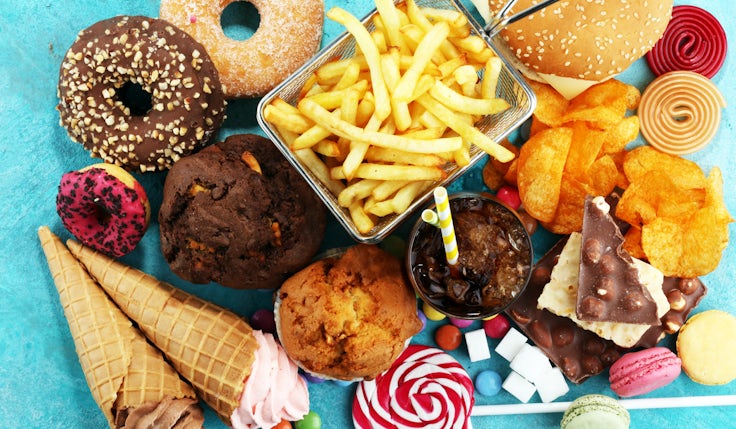Retail media, festive spending, ad impressions: 5 interesting stats to start your week
We arm you with all the numbers you need to tackle the week ahead.
Global retail media spend forecast to overtake linear TV next year
Global investment in retail media is expected to pull level with linear TV spend this year, before overtaking it in 2025, according to the latest WARC global ad spend forecast. This equalising of spend comes despite a forecast increase in linear TV ad investment this year of 1.9%. This is being driven by big events like the Olympics, Euros and US presidential election, and is expected to be only the second calendar year in which linear TV has achieved a positive year-on-year change in spend since 2016.
Next year, there is expected to be a 5.3% decline in linear TV ad spending. In 2026, it is expected to grow by a modest 1.2% globally. By contrast, the retail media channel is forecast to grow 21.3% this year and 13.8% in 2026.
Connected TV is expected to show stronger growth than its linear counterpart. Ad spend in the channel in 2026 is predicted to reach $40.7bn (£31bn), up from $35.3bn (£26.9bn). By 2026, connected TV spend will surpass the total invested in publishing, including magazines and news brands.
Source: WARC
Almost seven in 10 shoppers plan to spend the same or more than last year this festive season
 Over two-thirds (67%) of UK shoppers plan to spend the same or more this Christmas, with 8 million adults expected to up their spending this festive season.
Over two-thirds (67%) of UK shoppers plan to spend the same or more this Christmas, with 8 million adults expected to up their spending this festive season.
According to the research from Havas Media Network UK, the proportion of shoppers who intend to spend the same or more this festive season is up by over 20 percentage points versus two years ago when it was 45%. Furthermore, 3.7 million fewer shoppers express concerns about affording Christmas this year versus in 2022.
Younger shoppers, who were hit hardest by the cost of living crisis are driving a return of spending confidence, the data finds. Around one quarter (23%) of 18- to 34-year-olds plan to spend more than 2023, which is a 12 percentage point increase from 2022.
While consumers expect to spend the same or more this year, they are also on the hunt for deals in the lead up to Christmas. Almost three in four (71%) of shoppers say they are looking for deals, the highest proportion in four years.
Shopping online remains ever-popular, but the data suggests in-store shopping is still a favoured way shop, with over half (53%) expressing eagerness to return in-store this Christmas. Festive ads also remain popular among consumers, with two-thirds viewing these as a festive tradition.
Source: Havas Media Network UK
Nine in 10 ad impressions reach only half of UK households
 Over nine in 10 (92%) ad impressions reach just half of UK households, those in the top 50% for linear TV viewing.
Over nine in 10 (92%) ad impressions reach just half of UK households, those in the top 50% for linear TV viewing.
The average number of TV ads seen per day by those in the top linear TV viewing households is 72. By comparison, this figure for the bottom half is seven. The proportion of ad impressions coming from the bottom half of linear TV viewing households is down two percentage points versus 2023.
The research from Samba TV also looks at which brands are delivering the most ad impressions. Heinz was the top food and drink advertiser by ad impression, with its impressions up by a third (34%) in the first half of 2024 versus the same period in 2023. Nescafé was second in the sector, with ad impressions up 71%. Cadbury rounds out the top three, with its ad impression decreasing slightly year over year, by 3%.
TUI is the top travel advertiser in terms of ad impressions, with impressions up 158% versus 2023. P&O Cruises was second on the list, with ad impressions down 6%, and Jet2holidays is third, with impressions up 3%.
Overall, TUI was the biggest advertiser by impressions in the first half of 2024, McDonald’s was second, and Gala Bingo was third.
Source: Samba TV
Three-quarters of consumers believe unhealthy food ads targeting children should be banned
 Nearly four in five people (78%) agree that adverts for unhealthy foods aimed at children should be banned, find research from YouGov.
Nearly four in five people (78%) agree that adverts for unhealthy foods aimed at children should be banned, find research from YouGov.
Over a third (37%) of respondents “strongly agree” that these types of ads should be banned, while 41% “somewhat agree”. Just 4% of respondents “strongly disagree” with action to ban these kinds of ads and 12% “somewhat disagree”.
The research follows a decision last month by the Advertising Standards Authority (ASA) to ban an ad for Just Eat, after ruling that it failed to ensure that products high in fat, salt and sugar (HFSS) weren’t targeted at consumers under the age of 16.
Source: YouGov
Summer discounting sees retail prices fall for first time in three years
 Retail prices have fallen for the first time in almost three years, after a sustained period of inflation. Figures from the British Retail Consortium (BRC) show year-on-year deflation of 0.3% in August, compared to inflation of 2% in the previous month.
Retail prices have fallen for the first time in almost three years, after a sustained period of inflation. Figures from the British Retail Consortium (BRC) show year-on-year deflation of 0.3% in August, compared to inflation of 2% in the previous month.
However, the good news may be tempered by predictions rising energy costs will cause overall inflation to rebound later in the year. Consumers hoping for a reduction in their weekly grocery bills may also be disappointed, with falling retail prices focused on non-food ranges.
Overall food inflation in August was at 2%, down from 2.3% in July. Fresh food inflation fell from 1.4% to 1%.
The fall in prices is, at least in part, due to retailers discounting unsold summer stock as the end of the season looms, according to the BRC.
“This was driven by non-food deflation, with retailers discounting heavily to shift their summer stock, particularly for fashion and household goods,” says BRC chief executive Helen Dickinson.
“This discounting followed a difficult summer of trading caused by poor weather and the continued cost of living crunch impacting many families. Food inflation eased with fresh food prices, especially fruit, meat and fish, seeing the biggest monthly decrease since December 2020 as supplier input costs lessened.”
Source: British Retail Consortium








